Halcion Withdrawal and Detox
Halcion Info
Halcion is a benzodiazepine prescription medication, also known as Triazolam. Like other benzodiazepines (or ‘benzos’), it acts like a sedative by directly inhibiting the central nervous system. The medication is prescribed by physicians for the treatment of insomnia and other sleep-related disorders. It reduces the number of nocturnal awakenings and improves the overall quality of sleep. Abrupt cessation of Halcion usage can lead to withdrawal symptoms taking hold and may also cause rebound insomnia. Compared to other benzodiazepines, Halcion has a comparatively shorter half-life. This means that the drug will have been cleared from your system before you take your next dose. Halcion’s biological half-life influences its hypnotic effect during treatment and the rebound insomnia that can occur after withdrawal.
In order to maintain the effects of the drug, you may feel that your dosage needs to be increased, because of its fast elimination process. This can result in tolerance and later physical dependence, where you’ll be unable to sleep without the aid of medication. However, if you stop taking the drug immediately to prevent dependence from developing, you may experience moderate to severe withdrawal symptoms. Some of the common Halcion withdrawal symptoms include muscle spasms, sweating, abdominal cramps, vomiting, and in rare cases, convulsions. If you’re addicted to Halcion, attempting to quit without medical supervision can be dangerous.
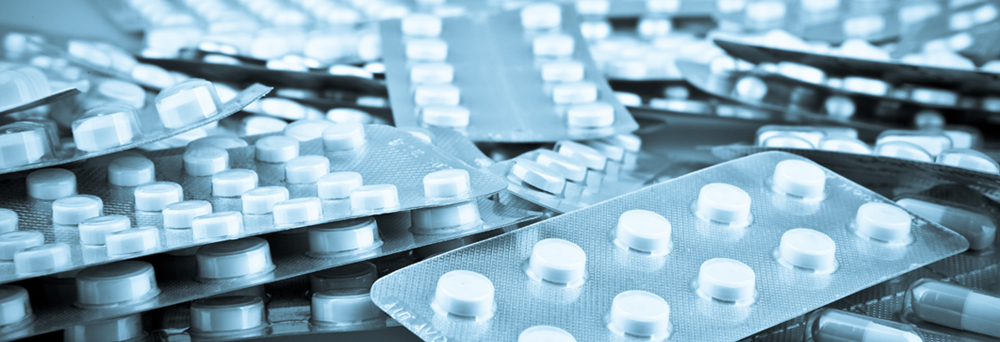
What Is Halcion Withdrawal?
Halcion is mainly used for treating insomnia and anxiety disorders, because of its short half-life. Therefore, it can quickly help you relax and also induce sleep. However, Halcion is only approved for short-term usage and if taken beyond its recommended seven-to-ten day window, you can quickly become addicted. Other benzodiazepine medications used in the treatment of insomnia include Dalmane (flurazepam), Prosom (estazolam), Ativan (lorazepam) and Doral (quazepam). If you become addicted to Halcion, you could experience withdrawal symptoms such as nausea and vomiting when you stop taking the medication.
The brain is able to balance the effects of Halcion after a prolonged period of usage. Therefore, once you stop taking it, your brain loses balance and has to struggle to readjust the natural chemicals that regulate nausea and mood in the absence of the drug. Developing a tolerance to Halcion can take as little as two weeks to occur. Once tolerant, your brain depends on Halcion to continue normal functioning. As a result, you may begin increasing your doses to achieve the euphoric effects that your previous dosage can no longer provide. Halcion withdrawal symptoms can be intense and dangerous, so you shouldn’t try to detox on your own or quit ‘cold turkey’.
Causes of Halcion Withdrawal
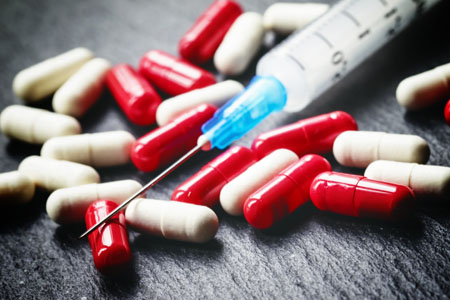
Withdrawal is a natural biological process and an indication of physical dependence or addiction to a drug. Halcion withdrawal occurs when you stop using the medication or significantly lessen the regular amount consumed. Generally, the more abruptly you quit, the more intense the withdrawal symptoms are likely to be. This equally applies to benzodiazepines like Halcion, which works by boosting the effects of GABA – a naturally occurring substance in the brain, which is
produced in order to calm the nervous system. In addition to this calming effect for which the drug is mainly prescribed, Halcion can produce a ‘high’ that is similar to alcohol intoxication.
It’s this feeling that causes you to want more of the drug – in greater quantities – before eventually developing a tolerance. The result is an inability to stop using Halcion because of a physical dependence. This occurs when your brain becomes so used to its effects that without the drug, it becomes challenging to send effective messages to the body. Even if you are mentally ready to quit, you might require professional treatment for Halcion withdrawal.
Phases of Halcion Withdrawal
Halcion withdrawal may occur in three major phases; beginning with early withdrawal, followed by acute withdrawal and protracted withdrawal. The first phase usually starts within a few hours (to a few days) of your last dose and could last a matter of days. During this early withdrawal period, you may experience anxiety and insomnia, while other symptoms for which Halcion was initially prescribed may return. The second phase of Halcion withdrawal generally begins a few days after quitting. This is the main withdrawal stage and includes symptoms such as anxiety and panic; muscle spasms or tension; insomnia; short-term memory impairment; nausea and/or vomiting; agitation; mood swings; seizures; hallucinations; twitching; and weight loss.
The acute Halcion withdrawal phase may last between two weeks and several months. This is also the period during which specific medications may be highly beneficial for treating the most uncomfortable symptoms. During this phase of withdrawal, you might also experience suicidal thoughts. However, your complicated emotions can be addressed with the help of therapy and support groups. During protracted Halcion withdrawal, certain symptoms could appear randomly and without warning. You may experience prolonged anxiety and insomnia, muscles twitches and tingling in your arms and legs. If a mental health disorder is also present (i.e. co-occurring disorder), specialised treatment for dual diagnosis can help you in recovery.
Halcion Withdrawal Symptoms: What to Expect
As a highly potent benzodiazepine medication, Halcion slows down brain function. Your brain compensates by significantly increased activity. When you stop using Halcion, your brain enters a hyperactive state, resulting in physical and psychological withdrawal symptoms. The physical symptoms vary from mildly uncomfortable to extremely unpleasant. Medically assisted detox is therefore recommended, via which a qualified expert is present to supervise and help you cope with any potentially dangerous symptoms that appear. Some of the physical withdrawal symptoms you can expect include:
- Muscle cramps
- Headaches
- Fever and sweating
- Nausea and vomiting
- Uncontrollable shaking
- Increased heart rate
- Seizures
In addition, you may struggle with the emotional and psychological effects of withdrawal during this process. Although psychological symptoms usually begin to fade after a couple of weeks, they can last as long as six months to one year after the physical symptoms disappear. It’s therefore essential you participate in comprehensive addiction treatment, involving individual and group therapy to learn how to cope with such issues and avoid a relapse. Emotional and psychological symptoms include sadness and depression, anxiety, sleep issues and hallucinations. If you’ve been abusing Halcion for any length of time, it’s important to remember that quitting on your own is dangerous. Medical detox is always required for benzodiazepine withdrawal.
Timeline of Halcion Withdrawal
Halcion is not intended to be taken long-term, as prolonged use or abuse can result in a physical and psychological dependence. Symptoms ranging from rebounding psychological to physical manifestations (such as diarrhoea, nausea and vomiting) could occur when the drug is absent from your system. The timeline, however, will depend on variants such as previous issues with substance abuse and level of dependence. Therefore, while your personal withdrawal experience may be different from that of another individual, the timeline can be expected to follow this format:
- Within six to 24 hours after your last dose, you could begin to experience your first physical symptoms.
- For the next one to seven days, physical symptoms like headaches, nausea and muscle spasms may develop more fully. Your doctor might have you on a tapering plan at this stage to relieve symptoms as much as possible, before gradually weaning you off the drug.
- By the second week, your physical symptoms peak and then begin to subside. However, anxiety, depression, insomnia and other psychological symptoms of withdrawal may persist.
- Within six to 12 months, following regular care through an aftercare programme, peer support or 12-step meetings – in addition to other supportive measures – your psychological symptoms will likely decrease and eventually disappear.
What is Halcion Detoxification?
Generally, inpatient detoxification is the ideal option for Halcion withdrawal treatment. Furthermore, Halcion is frequently abused alongside other drugs, so if you engage in this form of poly-drug use, detoxification will be aimed at preventing the withdrawal symptoms that the other drugs could also cause. It is only in cases of mild addiction that outpatient detoxification can be administered, making use of slower-acting medications as a replacement for Halcion. Residential rehab
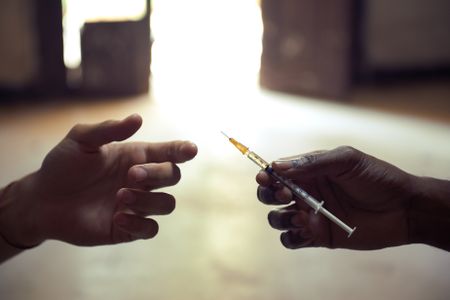
centres providing medical detoxification treatment offer a pleasant environment that can help you focus on recovery. Halcion detoxification is simply the first step in a comprehensive programme involving counselling and therapy.
It is essential for Halcion detoxification to be carried out under close supervision, as professional help is required for both quitting and drug replacement therapy. Different cross-acting medications can be used in the detoxification process, including a CNS depressant or another benzodiazepine that can induce similar pharmacological effects as Halcion. The most commonly used substances are diazepam and chlordiazepoxide, as they are long-acting medications. A licenced physician is usually in charge of supervising your physical and mental condition. If you suffer from any other medical conditions, you could be recommended for residential or inpatient rehabilitation, upon completion of detoxification.
Halcion Detox Process
If you are addicted to Halcion, you’ll need medical detox more than someone addicted to other substances. Detox can help rid your body of the drug in question and reduce the severity of withdrawal symptoms. In addition, there is always an experienced medical professional on hand to help should any complications arise whilst undergoing detox. Depending on your level of addiction, doctors may treat you using a less potent benzodiazepine. Therefore, during the Halcion detox process, you could be switched to longer-acting benzos like Klonopin or Valium, which remain in the body longer, meaning you won’t need as many doses.
Inpatient and outpatient treatment facilities can help you overcome your addiction in an environment that ensures safety and improves your chances of success. Such facilities can help you through the detox process and also with your abstinence in recovery. Ideally, the detox process should be followed by a residential and
Home Detox
Home detox typically involves quitting certain drugs and substances, without medical intervention to assist you in the event of an emergency. Without such assistance, you’ll experience the full impact of withdrawal symptoms for the entire period for which they last. Depending on the drug from which you’re detoxing, the symptoms can be intense and last for least two weeks or more. However, when you’re looking for the quickest and easiest way to recover, it’s normal to consider the home detox method. While detoxing from home is certainly possible, it might not be the best choice, as it isn’t always safe or effective.
When you become physically dependent on a benzodiazepine like Halcion, your body naturally expects that there will be a continuous supply of the drug in your bloodstream. The production of certain chemicals is therefore adjusted accordingly. However, if you suddenly curtail the supply of Halcion to your body, withdrawal symptoms can manifest. Home detox is not recommended, due to how dangerous and even deadly some of these withdrawal symptoms can be; and because of factors such as the dosage you were taking before quitting; as well as other drugs being taken in combination; and the existence of underlying medical conditions you might not be aware of.
Why Detoxification at Home can be Harmful
Detoxification is the period during which your physical and psychological dependence on a drug is broken by abstaining from taking it. Detoxification at home – especially from benzodiazepines – can be dangerous for the following reasons:
- Having a full medical and clinical team during detox is essential. At home, you have no access to their much-needed care and education to get you through withdrawal.
- At home, you have easy access to more addictive drugs and to people or situations that may further encourage addiction. However, in a medical detox facility, you enjoy privacy and an environment free of temptation.
- Home detoxification (especially in a harmful living environment with easy access to drugs) greatly increases your risk of relapse. When you undergo a medically supervised detox, however, the medical team can keep you accountable all through your treatment programme to ensure a successful detox.
- Physical withdrawal symptoms are unpleasant and can discourage you from completing detox. At a detox facility, experienced medical professionals can administer drugs to put you at ease.
- Detoxification at home puts you at risk of some serious medical complications associated with Halcion withdrawal. The severity of withdrawal depends on your level of addiction and other personal factors, but there is always the risk of dangerous symptoms appearing at any point during the process. If such symptoms were to manifest, it could be lifesaving to have an experienced healthcare provider close by.
Medically Supervised Halcion Withdrawal Detox
During a medically supervised Halcion withdrawal and detox, a benzodiazepine taper is usually initiated. This taper method ensures your body doesn’t go into withdrawal too quickly, which could provoke severe withdrawal symptoms. The speed of the taper will be determined by your specific needs. After it’s started, your progress will be monitored by a medical team and your dosage levels will be adjusted during the course of detox. Medically supervised withdrawal can last for weeks, months or more in some cases. You can be said to be fully detoxed when there are no more traces of benzodiazepines in your system.
Usually, your attending doctor will apply a benzodiazepine during tapering. They could use Halcion or another benzodiazepine to taper you off your addiction. The goal is to utilise the medication which poses the least amount of risk for you. Halcion activates the GABA receptors in the brain, so if you stopped taking Halcion ‘cold turkey’, they would go into shock from the sudden and total deprivation. Your body would manifest this shock by exhibiting extreme symptoms of withdrawal. However, with a taper, the GABA receptors do not go into shock, as they are provided with enough benzodiazepines to avoid such extreme symptoms, even though it is not enough to cause heightened relaxation and any other psychoactive effects.
Medications Used During Halcion Detox
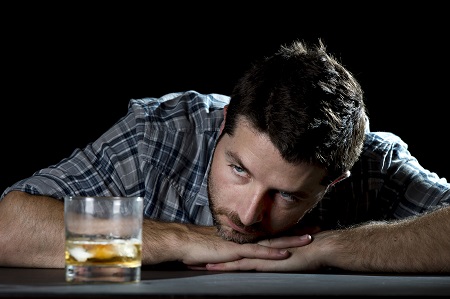
During detox, doctors and other healthcare providers may use medications in order to taper you off Halcion, help you cope with withdrawal symptoms and reduce discomfort. Your doctor may slowly reduce your Halcion dosage over a period of weeks or months, instead of recommending an abrupt cessation of the drug. Since Halcion has a short half-life, they might recommend a benzodiazepine with a longer half-life, such as chlordiazepoxide or Klonopin (clonazepam) to facilitate the
tapering process and help ease your symptoms. Other drugs that may be used to manage severe withdrawal symptoms include sedating antidepressants such as trazodone, phenobarbital, carbamazepine and valproate.
If you’re experiencing severe autonomic consequences such as profuse sweating or racing heartbeat as part of withdrawal, antihypertensive medications such as clonidine can be used for treatment. However, the use of medications during Halcion detox does not negate the risk of seizures and other dangerous withdrawal symptoms. You could require close supervision from medical professionals during withdrawal to ensure your safety. In addition, though medications are beneficial and even necessary sometimes, treatment is more effective when combined with psychological methods such as cognitive and behavioural therapies. The best treatment, therefore, involves detoxifying the drug and addressing the underlying reasons for addiction.
Treatment for Withdrawal
Halcion leaves the system fairly quickly because of its short half-life. As a result, withdrawal can begin as early as mere hours after your last dose. Generally, the frequency and length of use determine your withdrawal experience. Also, if you’re taking other benzodiazepines like Valium with your regular dose of Halcion, you can expect a longer and more severe withdrawal period, as these drugs will take a longer time to be eliminated from your system. When Halcion withdrawal begins, medical attention is needed as quickly as possible. Withdrawal in the absence of a doctor’s supervision is dangerous, because of how potentially lethal the symptoms can be. Furthermore, if you are dependent on other drugs (or alcohol), your doctor needs to be aware of the necessary steps to be taken during withdrawal.
Medical attention is crucial whilst withdrawal is ongoing, and cannot wait until it has passed. There is a risk of seizures and other dangerous symptoms. In medical detox, you will be given round-the-clock supervision to ensure your safety and comfort. Some doctors may choose to switch you on to longer-acting benzodiazepine medications, which can make the process last even longer. In such cases, you may begin your detox at a residential treatment facility and then transfer to an outpatient treatment programme, as your dosage is gradually tapered off over a period of time.
Call our admissions line 24 hours a day to get help.
Withdrawing from Halcion: Treatment Methods and Options
Medical detoxification to handle symptoms of withdrawal is only the beginning of your recovery from Halcion addiction. After withdrawing from the substance under close professional supervision, you can follow up with personalised counselling and therapy. As soon as you’re able to deal with pressure and stress in a healthy and productive way, you’re no longer likely to return to using Halcion as a means of escape. When you’ve lost the desire to use it, you can be deemed ready to undergo therapy to address the psychological, emotional and social factors surrounding your Halcion abuse. Therefore, as soon as your medical detoxification process is complete, you can enter a residential treatment centre for three weeks or more of intensive cognitive and behavioural therapy.
Additional forms of therapy that contribute to your recovery programme could include music therapy, art therapy, meditation, exercise and other activities provided with the aim of helping you achieve self-realisation. This type of treatment is designed to equip you with the skills to cope with the daily personal, social and psychological triggers you might face, without returning to the use of addictive drugs. Residential treatment may be followed by a year or more of counselling on an outpatient basis, provided by experienced counsellors or peer support staff. Support groups such as 12-step groups like Narcotics Anonymous (NA) are recommended to provide you with extra reinforcement during recovery.
Drug treatment for withdrawal
Benzodiazepine withdrawal is physically and emotionally challenging, so if you stop using Halcion ‘cold turkey’, you may experience severe and even deadly symptoms. Furthermore, if you have a history of taking large doses or continued use of Halcion over a long period of time, withdrawal symptoms can also be severe. Withdrawal symptoms induced by shorter-acting benzos like Halcion begin faster than for longer-acting medications, as it takes a shorter time for the substance to leave your system. Drug treatment for withdrawal involves administering a substitute medication that is cross-tolerant with the drug you’ve become addicted to. These medications can either interact at specific receptors or possess effects that reduce severe withdrawal symptoms.
Many regimens for treating withdrawal take your level of addiction into consideration; using cross-tolerant medications titrated to the symptoms you’re experiencing. The dose is then reduced gradually over intervals, designed to wean you off the original substance. Depending on the addiction, this regimen could include other benzodiazepines, barbiturates, ethanol, propofol and clomethiazole. Other drugs that have been effectively used as an adjunctive therapy include carbamazepine, gabapentin, propranolol and clonidine.
Guided Halcion therapy
Withdrawing from benzodiazepines like Halcion is not a steady process, which is why you need the help of a doctor to prescribe and administer a tapering regimen. The supervising doctor will work with you to develop a plan of tapering aligned to your Halcion usage. This will ease your withdrawal symptoms by slowly training your body to function without the drug. Your symptoms can occur in clusters and with varying intensity. At least one week between dosage reductions is recommended to allow your body to adjust. If you experience withdrawal symptoms, the dose can be maintained until your symptoms fade, but the dosage is not increased to compensate for such sensations.
It’s beneficial to undergo guided Halcion therapy in an inpatient programme under consistent monitoring. Medical staff can check on you frequently to ensure you’re not experiencing severe withdrawal symptoms. In addition, they can help you cope with intense symptoms with over-the-counter pain relief medication or antidepressants in small doses. Guided Halcion therapy can take several weeks or even a few months, but is effective in helping you overcome Halcion addiction. Also, a doctor will monitor your progress and can provide help if you experience any other difficulties.
Live an abstinent life Again
Achieving recovery from addiction is a tremendous feat. You can do this effectively and go on to live a satisfying and rewarding life. It may be challenging to seek help for your Halcion addiction when you have a family, career and financial responsibilities to consider. However, your addiction cannot simply go away of its own accord. You can find lasting abstinence by confronting it head-on and having access to round-the-clock treatment and monitoring, provided by rehabilitation centres. Drug rehabilitation programmes involve a drawn-out process and include methods that need to be implemented over a long period of time.
You can draw on your physical and mental strength, in addition to all the support you need to overcome Halcion addiction. In many cases, certain mental health disorders occur alongside a drug use disorder, and both need to be treated together to ensure complete recovery. Take action as soon as possible when you notice a developing pattern of Halcion abuse. If your loved one is showing signs of addiction, an effective route to treatment is to approach them with facts and solutions, instead of threats or accusations, and help them begin the journey to recovery.
Preventing relapse
Relapsing once you’ve quit Halcion can be determined by various factors, including your genes, environment, personal commitment and family support. If you suffer a relapse, remember that you’re not alone and that there are strategies you can implement to overcome relapse and move forward with your recovery. Relapse occurs when you return to using drugs or alcohol after a period of abstinence. This can happen even after completing a comprehensive treatment programme and
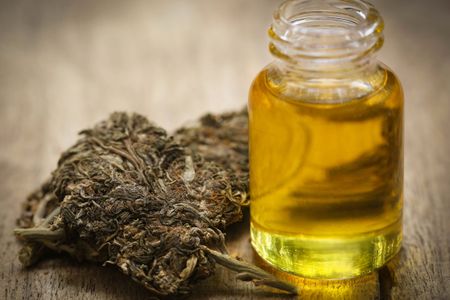
after many previously successful attempts to fight off cravings. According to the National Institute on Drug Abuse, before you come up with a relapse prevention plan, you should take into consideration your drug use patterns and any drug-related social, psychological and medical issues. Also, finding a supportive environment can help you stay on the straight and narrow. Therefore, join a support group such as Narcotics Anonymous and attend meetings regularly, as other participants will easily understand what you’re facing during the recovery period. Furthermore, it can be helpful to know what your triggers are so that you’ll recognise if and when you may be sliding into dangerous territory. Some triggers could include situations that cause stress and anxiety, though less obvious triggers like setting unrealistic goals or having too many responsibilities can also lead to relapse.
Tips for Handling Cravings
Cravings are normal for any type of addiction and happen quite often, but fortunately, they always pass with time. At the beginning of recovery, you might experience cravings that are quite intense. However, each one will subside if you can patiently wait it out by ‘urge surfing’ and also have a relapse prevention plan in place. After a period of time, you can expect your cravings and urges to decrease in strength and frequency. There are also some coping strategies you can put into practice to make handling cravings a lot easier:
- Run, swim and engage actively in any sport you enjoy. This speeds up your recovery process and raises your dopamine levels in a natural way.
- Cut out caffeine completely to cope with insomnia. The moment you begin to feel tired, try to get into bed as soon as possible.
- Avoid Halcion and all your past regular sources of the substance completely.
- When you experience feelings of anxiety and panic, become aware of the way in which your body is reacting. Recognise this as nothing but a symptom of Halcion withdrawal which will eventually pass. Do something relaxing to help calm you and decrease your heart rate.
Find a treatment centre
There are so many different options for detox and rehabilitation treatment. Some may focus only on treating the underlying causes of drug abuse, while a combination of cleansing, therapy and counselling may be the focus of others. Some treatment centres require inpatient treatment, which involves you living at the facility and receiving medically supervised treatment and round-the-clock care. Others may provide intensive care via a well-structured outpatient programme, allowing you to receive counselling through the treatment centre, whilst staying at home.
Therefore, when trying to find a treatment centre, it’s essential you carefully consider all available options and choose a one that matches your specific individual preferences. Choosing the best treatment centre for you may significantly increase the likelihood of a healthy and successful recovery.
FAQs
What Is Halcion Withdrawal?
Halcion withdrawal includes the different symptoms (such as nausea and vomiting) which you might experience when you suddenly stop or significantly reduce your dosage.
Is Halcion Withdrawal Dangerous?
Quitting benzodiazepines like Halcion can result in dangerous and sometimes deadly withdrawal symptoms, but medical detox treatment can help
Are there ways to prevent or reduce withdrawal symptoms?
During medically supervised detox, a physician can give you medications as needed to prevent or reduce the effects of withdrawal.
Is Detox from Halcion dangerous?
Halcion is a potent medication with fast-acting effects and intense withdrawal symptoms. Therefore, Halcion detox can be dangerous, especially if you are attempting to do it alone by going ‘cold turkey’.
Can You Die From Halcion Withdrawal?
The withdrawal syndrome associated with Halcion requires professional treatment, because it can be severe and in some cases, deadly.
How Long Does Halcion Withdrawal Last?
There is currently no medically approved duration for Halcion withdrawal. The length of time it takes will depend on you and on how much and how often you use the substance.
Are There any Home Remedies for Getting Clean Safely?
If you want to get clean from Halcion, it’s not recommended to use any sort of home remedy or natural treatment. You may want to detox at home, but it’s best to speak with a doctor or physician with regards an alternative way to detox that would be safer and more effective.
How Long Does it Take to Detox from Halcion?
Generally, Halcion may take between 24 to 72 hours to leave your system. However, the detox timeline varies, depending on the dosage of Halcion you’ve consumed and at what frequency.
Can Medication Help?
If you are experiencing withdrawal from Halcion, your doctor can treat you using less potent benzodiazepines to help you cope with withdrawal symptoms.
Call our admissions line 24 hours a day to get help.

